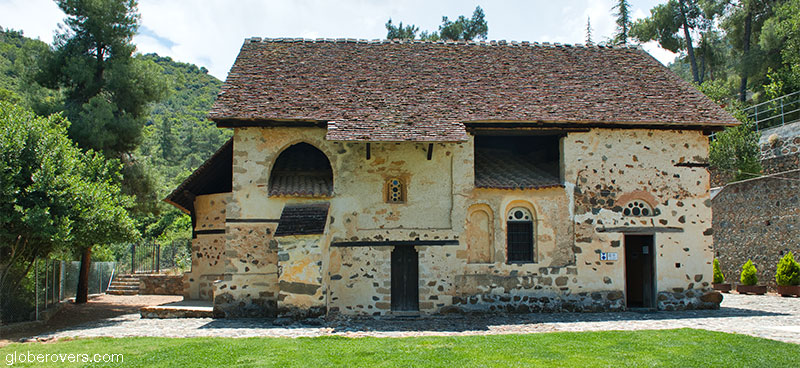
Cyprus is a jewel tucked in the Eastern Mediterranean, the pearl of the turquoise seas! Filled with archaeological, mythical as well as cultural destinations, this small island has plenty to keep most visitors occupied for several days. Whether you are an adventure hiker, a scuba diver, beach bum, history buff, mountaineer, city slicker, a foodie, or a salt lake walker, you will find Cyprus to be mesmerizing. Rent a 4×4 vehicle, put on your hiking shoes, and explore the Republic of Cyprus.
1. Ayia Napa
The southeastern coastline of Cyprus is idyllic, especially as you get closer to the Capo Greco headland at the far eastern end. The water here is a brilliant turquoise colour. The entire area around the Cape Greco National Forest Park is worth exploring—beaches, swimming holes, sea caves, and more.
Several beaches to the west of Cape Greco, such as Nissi Beach, are beautiful. The town of Ayia Napa is interesting, especially the Ayia Napa Monastery.
To the north of Capo Greco are more beautiful beaches, including Fig Tree Bay, Kalamies Beach and Trinity Beach.

2. Paphos
The dominant features of the town of Paphos are the Medieval Castle by the harbour, the Paphos Archaeological Park, and the Tombs of the Kings. These are ancient structures dating back to between the 4th century BC to 3rd century AD.
North of Paphos are several beautiful beaches, one of which is Lara Beach, leading to the Akamas Peninsula in the far northwest. A few kilometres southeast of Paphos is the village of Geroskipou, known for its 9th century Byzantine Church.
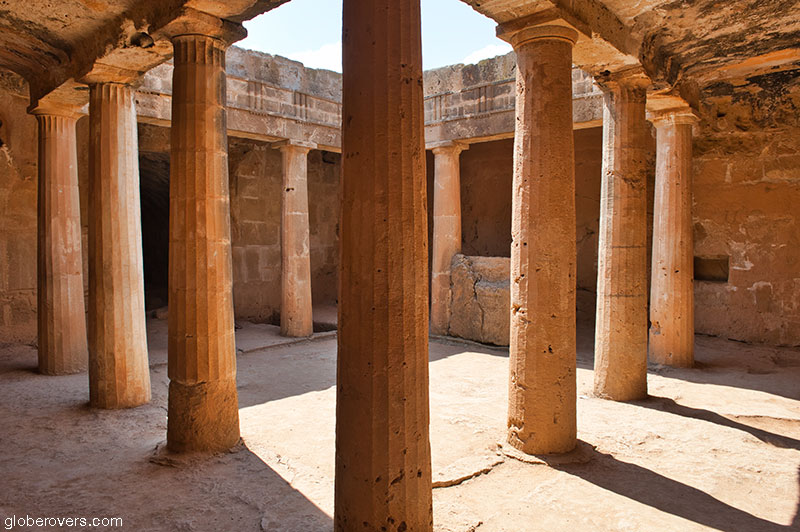
3. Troodos Villages
In the central western part of the island are the Troodos Mountains with Mount Olympus (Chionistra) at 1,952 m (6,404 ft), being the highest point in Cyprus. Here you will find ski resorts and quaint mountain villages.
Among the highlights of this area are the villages of Pedoulas and Kakopetria. Both are red-roofed communities built along the valleys, each with its own prominent church building. The winding road through the mountains is beautiful, especially at the Amiantos Mine View Point.

4. Nicosia
Nicosia, capital of Cyprus, is the world’s last divided capital. Split into North Nicosia and South Nicosia, the Green Line of separation goes through the city. Many travellers come here to walk across the Ledra Street pedestrian crossing to get that “strange feeling”.
While South Nicosia has modern restaurants, shopping malls and fancy cars, North Nicosia is more of a traveller’s adventure as time has been moving very slowly here since the Turkish invasion in 1974. Don’t miss the 14th century Selimiye Mosque and the 16th century Büyük Han Caravanserai.

5. Salt Lakes
A short drive south of Larnaca on the airport road is the Larnaca Salt Lake, complete with pink flamingos from November to January.
About 80 km (50 mi) southwest is Limassol Salt Lake, also known as Akrotiri Lake which lies at 2.7 m (8.9 ft) below sea level. The lake is worth a visit, especially in winter when thousands of flamingos gobble up brine shrimp, crustaceans, and blue-green algae. It is the largest inland body of water on the island and lies inside the United Kingdom Overseas Territory of Akrotiri.
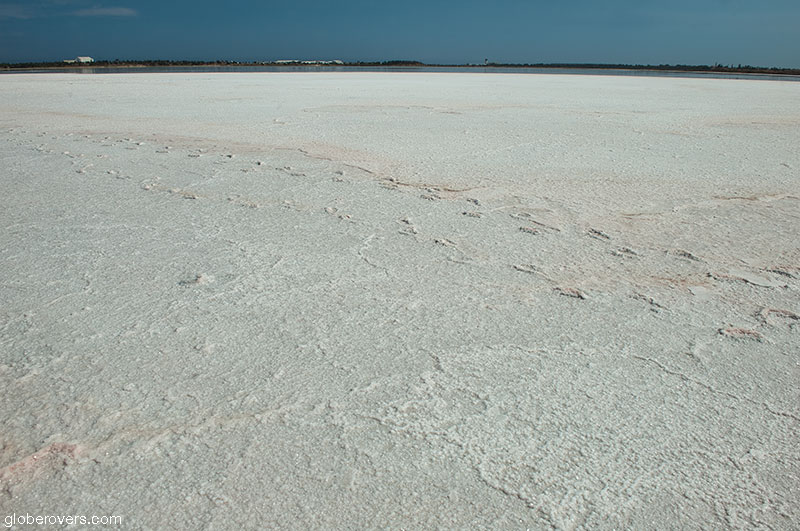
6. Aphrodite’s Rock
Along the southwest coast is the famous Aphrodite’s Rock, locally known as Petra tou Romiou. Located along the beautiful rocky southern coastline, this is the legendary spot where the ancient Greek goddess Aphrodite—associated with love, beauty, pleasure, passion and procreation, is said to have emerged from the waves.
Two large rocks jut out from the sea, creating one of Cyprus’ most photographed spots. At sunset, it is one of the island’s most magical places. The entire coastline here is quite dramatic and beautiful.

7. Akamas Peninsula
The Akamas Peninsula lies at the westernmost point of the Republic of Cyprus. The area covers 230 square kilometres (88 sq mi) containing valleys, gorges and wide sandy bays. Here you will find 168 varieties of birds, 20 different reptiles, 16 species of butterfly and 12 different mammals, not to mention its rich variety of fauna.
As one of the least inhabited places on the island, roads are not great with mostly just dirt tracks and footpaths. The best way to explore is by hiking, renting a 4WD or signing up for a jeep safari, or by taking a boat tour along the coast.
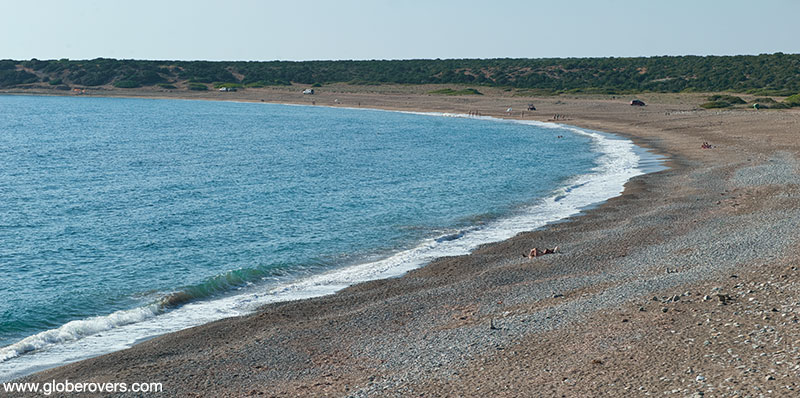
8. Lefkara
Located about halfway between Limassol and Larnaca, Lefkara is a mountain village famous for its lace, known as lefkaritika, and silver handicrafts. This picturesque village with its narrow, winding streets and traditional architecture of old, terracotta-roofed houses is unquestionably one of the most beautiful villages in Europe!
To the east of the village lies the Greek Orthodox Stavrovouni Monastery, founded by Saint Helena between 327–329 AD which makes it one of the oldest monasteries in the world.
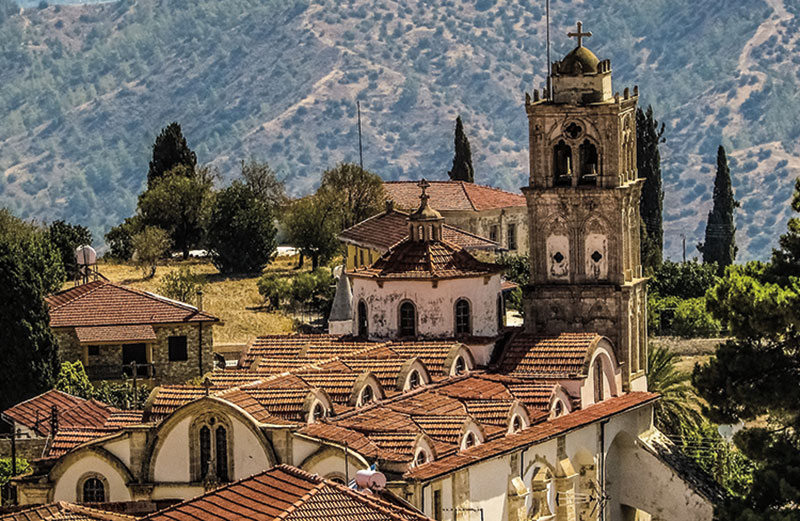
9. Ancient Kourion
West of Limassol are the ruins of the 2nd century city-kingdom of Kourion. This once flourishing kingdom was destroyed in a magnitude 8.0 or higher earthquake at sunrise on July 21, 365 AD.
Here you will find the ruins of the Greco-Roman theatre—the site’s centrepiece, the 4th century AD ‘House of Achilles’ and the late-3rd century AD ‘House of the Gladiators’, both have impressive mosaic floors. The original parts of the Roman Agora date back to the early 3rd century. An interesting site if you like ancient ruins.
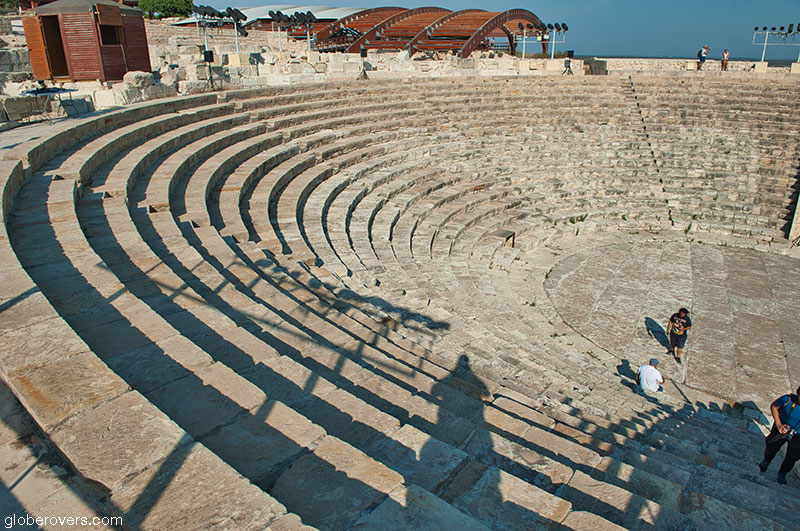
10. Larnaca
Larnaca, the third largest city after Nicosia and Limassol, is the premier seaside resort town of the country. The pleasant beach is backed by a seafront promenade lined with hotels and restaurants and overlooked by a 17th century Ottoman-era fort.
Other attractions include the Agios Lazaros (Church of St. Lazarus), the Hala Sultan Tekke Mosque, Skala the old Turkish Quarter, and several museums. Outside town is the Kamares Aqueduct and the Larnaca Salt Lake near the airport.

☛ Read more: Cyprus – A Divided Adventure Island
☛ Read more: Circling the Republic of Cyprus



Blog post and photos by Peter who has been travelling almost full-time since 2005 and has been to over 122 countries. He visited several countries, such as Japan, more than 20 times. Peter is Editor-in-Chief and Publisher of GlobeRovers Magazine, an independent travel magazine focused on intrepid destinations.
